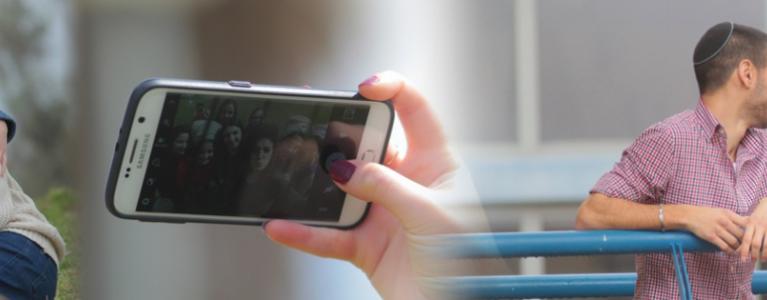
Rebbi Dr. Yedidya HaCohen, the head of the Jewish Philosophy department at Orot Israel College, reveals an educational perspective from the personal experience of Rabbi HaNazir during his time as a teacher.
These days, we mark the fiftieth year since the passing of Rabbi David Cohen, "HaNazir," a close disciple of Maran Rabbi Avraham Yitzchak HaCohen Kook of blessed memory. He was called to his eternal home on the 28th of Av, TSHL”B.
Most people are familiar with Rabbi HaNazir through his role as the editor for Orot HaKodesh, his great Rebbi’s book, his yearning for prophecy, and his unique way of life that encompassed asceticism and vegetarianism.
However, a lesser-known fact is that he served as an educator, not only as a rabbinic mentor for older students at the "Mercaz HaRav" yeshiva but also for young children within a school setting. In his diary, he recounts that when he was twenty-one years old, after studying Torah in yeshivas such as Valozhin, Radin, and Slabodka, and before turning to academic studies, he was offered a teaching position in the summer of the year 1908 at a school called "Metukan" in the Russian town of Krasnoye. (Rabbi HaNazir's Diary, pages 86-87).
Studying the theory of education
In the Jewish Philosophy department at "Orot Israel" College, we learn about the figure of Rabbi HaNazir and engage with his teachings. What do we know about the period in which he served as an educator, and what can we learn from it?
In Rabbi HaNazir's diary, he writes about the first action he took after receiving the teaching position:
I happened upon the book "HaCheder" by [Yosef Yeremiah] Glass, in which the theory and practice of education and instruction are explained, and I followed it to the smallest detail, including games and trips.
Rabbi HaNazir understands that it's not enough to be a graduate of a yeshiva or a seminary to teach in a school. Education is a profession that needs to be seriously studied before entering the classroom. He studies the theory and practice of education and thereby acquires pedagogical tools to properly convey the study material to students, applying them in the field of education in all its aspects. Rabbi HaNazir also learns about the importance of play during breaks and the value of taking students on trips from time to time, and he incorporates these practices with his students.
The Ideal of Studying the Theory of Education
Let's continue examining Rabbi HaNazir's diary: "For the older class, I organized a study book... with stories, for example, principles of grammar, especially from the lives of the students of the great yeshivas... The students also succeeded in Talmud study, and there the school shone brightly."
Rabbi HaNazir prepares his lessons meticulously. It seems that due to a lack of study books that suited his mindset in those days, he writes his own stories to teach his students how to write correctly. The stories he chooses to write are not just random tales, but stories from the lives of the yeshiva students he knew from the Lithuanian yeshivas where he studied. In this way, even in the instruction of language, the rabbi imparts to his students ideals of a life devoted to the Torah.
Meaningful learning
Following the success, Rabbi HaNazir was asked to continue teaching in the upcoming year, 1909, at a school in a nearby town called Shavel, where he was assigned to educate first-grade students. He writes in his diary:
"I maintained a journal, containing psychological notes, students' questions and answers, their aspirations, and what they want to become... Then, during Torah study time, in the portion of Abraham and Sodom, I arranged a play. Abraham prays to God and argues with Him, the judge of the whole land will not do justice, and the actors playing the roles were students."
One of the topics being discussed in today's education system is meaningful learning. According to this concept, learning in the classroom cannot be solely about the teacher conveying material to passive students, who listen, summarize, and review the material for exams. Instead, the learner should be actively engaged in the learning process. The methods and topics of learning should also be relevant and meaningful to the student's world. Teaching, using such a method will lead to a deeper understanding of the subjects being taught. This learning approach is widely accepted today, to the extent that a few years ago, the Ministry of Education in Israel shifted some matriculation exam tasks from various subjects to tasks that students complete during meaningful learning sessions.
This teaching method was less developed in the past. Nevertheless, we read in Rabbi HaNazir's diary that already over a century ago, he taught Torah stories using a dramatization method. He actively engaged the students during the learning process, with them playing various roles, thus learning the Torah stories.
Another noteworthy aspect is Rabbi HaNazir's personal relationship with his young students. In the past, it was commonly accepted that the teacher's role was primarily to impart study material to the students, and they were less involved or interested in their personal lives. Yet here, despite the young age of his students, Rabbi HaNazir initiates personal conversations with each one, inquires about their aspirations, and in doing so, learns about the students’ personalities and the proper way to connect with them.
In Rabbi HaNazir's view, the teacher's role isn't just about conveying study material; it's about being a God-fearing personality, professionally skilled in education, and connected to each student's world.


